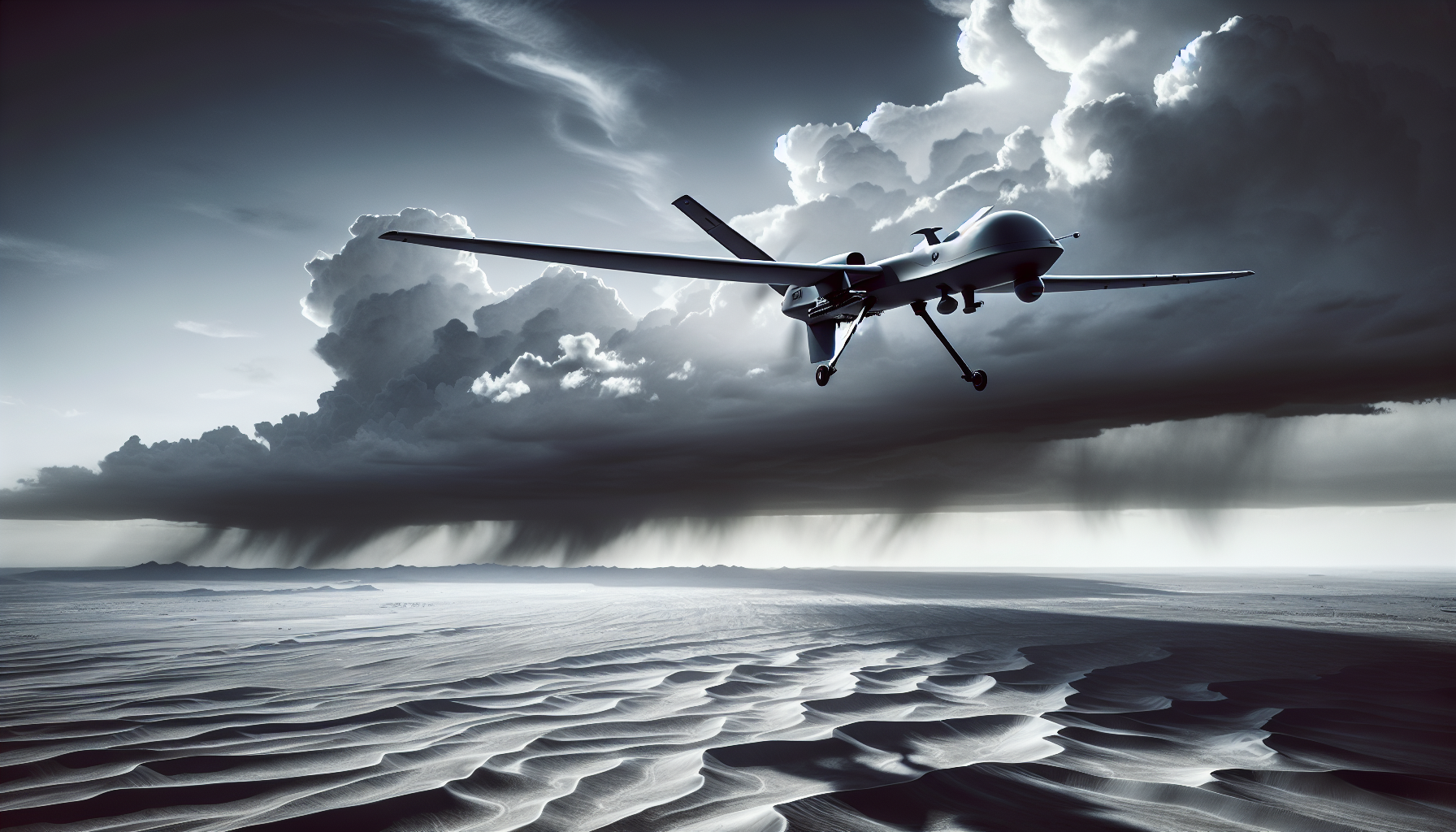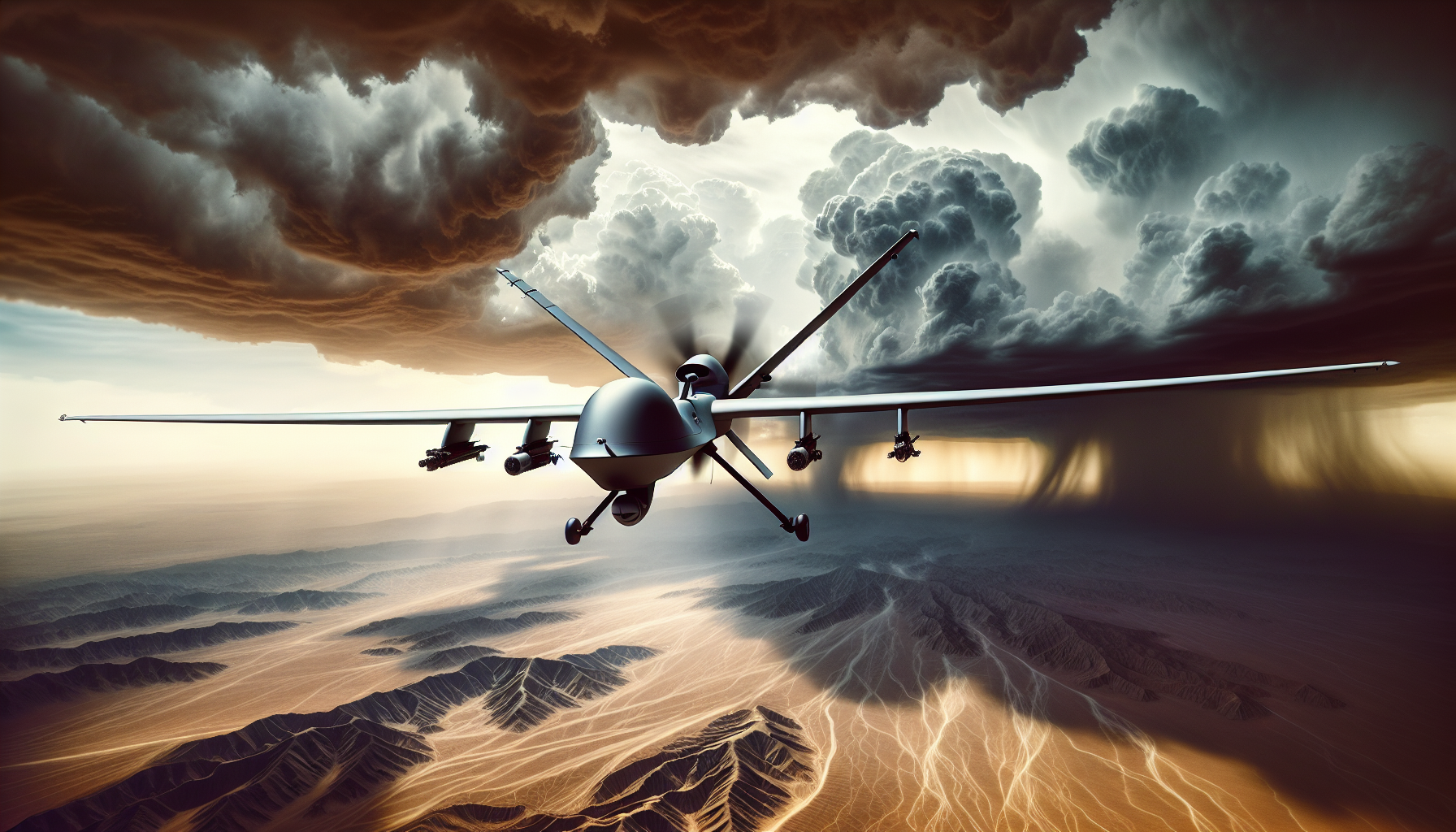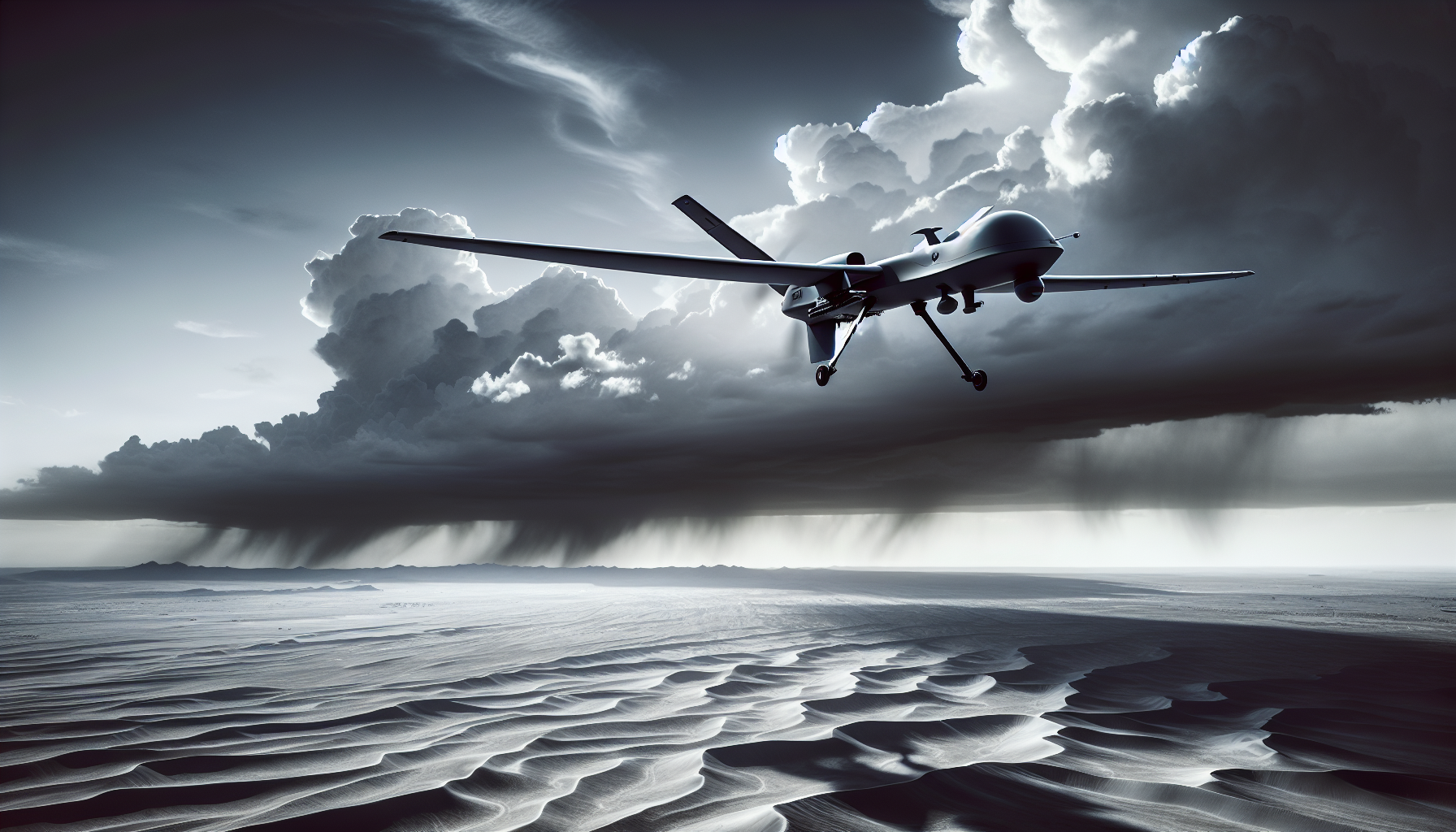On June 21st, a significant military operation took place as the United States executed a record-setting strike against Iranian nuclear facilities. Utilizing seven B-2 stealth bombers, the operation involved a non-stop journey from Whiteman Air Force Base in Missouri, covering over 13,000 kilometers to target sites at Fordow and Natanz. Additionally, 30 Tomahawk cruise missiles were launched from an Ohio-class submarine in the Gulf of Oman, demonstrating a multi-faceted strategic approach to neutralizing nuclear threats. This article examines the execution and ramifications of Operation Midnight Hammer, assessing not only the immediate impact on Iranian capabilities but also the broader international reactions.
The subsequent analysis will detail the specific targets struck during the operation, the technology and weaponry employed, and the ensuing damage assessment. Furthermore, your understanding will be enriched with insights into Iran’s response and the subsequent geopolitical implications stemming from these actions. By examining these components, it becomes evident how Operation Midnight Hammer marks a pivotal moment in U.S.-Iran relations and the global discourse on nuclear proliferation.
Operation Midnight Hammer: A Comprehensive Analysis
Overview of Operation Midnight Hammer
Date and Significance of the Operation
On June 21, 2023, the United States launched Operation Midnight Hammer, marking a pivotal moment in contemporary military operations aimed at disrupting Iran’s nuclear ambitions. This highly coordinated offensive demonstrated not only advanced military capabilities but also the complexities of international relations within the context of nuclear non-proliferation. The significance of this operation lies in its unprecedented scale and the choice of targets directly tied to Iran’s potential to develop nuclear weapons.
Objectives of the Operation
The principal objective of Operation Midnight Hammer was to incapacitate three crucial Iranian nuclear facilities—Fordow, Natanz, and Isfahan. By launching a preemptive strike, the U.S. aimed to curtail Iran’s uranium enrichment activities and thereby delay its nuclear program significantly. Furthermore, the operation sought to send a clear message to both Iran and the global community about the United States’ commitment to countering nuclear proliferation.
Participants and Key Personnel
Operation Midnight Hammer was executed by a coalition of U.S. military assets, including the United States Air Force and Naval forces. Key personnel involved in the planning and execution included high-ranking officials from the Joint Chiefs of Staff and strategic Command. The operation was overseen by the Secretary of Defense, along with intelligence agencies that provided critical real-time data to inform tactical decisions throughout the mission.
The Targets: Iranian Nuclear Facilities
Fordow: Strategic Importance
The Fordow facility, situated deep within a mountain range, was designed to protect Iran’s uranium enrichment activities from potential strikes. As one of the most secure nuclear facilities globally, its strategic importance cannot be overstated. The operation aimed to compromise this safety net, significantly weakening Iran’s capability to enrich uranium to weapons-grade levels. By targeting Fordow, the U.S. sought not only to disrupt current operations but also to deter future advancements.
Natanz: Overview and Role in Iran’s Nuclear Program
Natanz serves as Iran’s primary uranium enrichment site, featuring advanced centrifuges that facilitate the enrichment process. The facility’s significance is underscored by its role in contributing to Iran’s nuclear ambitions. The U.S. strike aimed to dismantle the centrifuges and disrupt enrichment processes, thereby impacting Iran’s long-term nuclear capabilities. As such, targeting Natanz was critical to achieving the operational objectives laid out for Midnight Hammer.
Isfahan: Industrial Capabilities and Relevance
The Isfahan site specializes in uranium conversion, an essential step in the nuclear fuel cycle. It is here that uranium ore is transformed into uranium hexafluoride, a precursor for enrichment. Striking Isfahan not only targeted the immediate conversion capabilities but also sent a broader message regarding the interconnectedness of different stages within Iran’s nuclear program. The assault on Isfahan aimed to expose and disrupt a vital link in the nuclear supply chain affecting Iran’s overall program.

The Tactical Approach
Use of Stealth Technology: B-2 Bombers
Employing B-2 Spirit Stealth Bombers was a cornerstone of the operation. These aircraft are designed to penetrate sophisticated air defense systems with minimal detection. By utilizing B-2s for the strike, the U.S. capitalized on their low radar cross-section, ensuring that they could deliver munitions accurately at high-value targets while minimizing the risk of interception. The B-2s’ advanced avionics enabled precise targeting, which was essential for achieving operational success.
Details of the Flight Path and Logistics from Whiteman AFB
The logistical planning of Operation Midnight Hammer involved extensive coordination and preparation. The B-2s embarked on a non-stop mission from Whiteman Air Force Base in Missouri, covering over 13,000 kilometers to their targets. This flight path was meticulously calculated to optimize fuel consumption while allowing for evasive maneuvers against enemy radar systems. Each bomber was equipped with satellite communications to maintain real-time updates and direction, ensuring the mission’s success against time-sensitive targets.
The Simultaneous Strike Strategy with Tomahawk Missiles
Employing a simultaneous strike strategy, the operation also included the launch of 30 Tomahawk cruise missiles from a U.S. Ohio-class submarine stationed in the Gulf of Oman. This dual-pronged approach allowed for the effective targeting of multiple facilities concurrently, subsequently overwhelming Iranian defenses. By striking multiple targets at once, the operation maximized the element of surprise and reduced the likelihood of coordinated defensive responses from Iran.
Weapons Employed
GBU-57 Massive Ordnance Penetrators: Design and Capabilities
A vital component of the operation was the deployment of the GBU-57 Massive Ordnance Penetrator (MOP). Designed specifically to penetrate hardened targets, the GBU-57’s robust construction and guidance system allow it to reach deep underground facilities like Fordow and Natanz. The use of this cutting-edge munition underscores the importance of advanced technology in modern warfare, showcasing the ability to engage in precision strikes against well-fortified installations.
Comparison with Previously Used Munitions
The GBU-57 represents a significant leap in capability compared to earlier munitions such as GPS-guided bombs. While previous types may have struggled to penetrate the reinforced structures protecting Iran’s nuclear facilities, the GBU-57’s advanced design allows it to penetrate several meters of concrete, ensuring that critical infrastructure can be effectively targeted. This operational advantage enhances the effectiveness of strikes and positions the U.S. military as a leader in developing specialized weaponry suited for contemporary conflict.
Operational Deployment and Implications
The operational deployment of the GBU-57s indicated a shift towards high-technology warfare, where precision strikes are preferred over large-scale bombings. This change not only minimizes collateral damage but also allows for targeted disruption aimed at specific military capabilities. The implications of successful strikes on Iran’s nuclear program extend beyond immediate tactical gains, potentially reshaping the broader power dynamics in the region.

Damage Assessment Post-Strike
Immediate Impact on Nuclear Facilities
Following the execution of Operation Midnight Hammer, immediate assessments indicated significant damage to the targeted nuclear facilities. Both Fordow and Natanz suffered extensive destruction to their enrichment features, hampering Iran’s capabilities to produce weapons-grade uranium. The simultaneous strike on Isfahan compounded this damage, disrupting uranium conversion operations at another critical juncture in the nuclear fuel cycle.
Assessment of Military Effectiveness
Military analysts swiftly assessed the effectiveness of the operation, concluding that the combination of precision strikes and the element of surprise yielded substantial success. The dual strike strategy proved effective in achieving strategic aims, with reported destruction of key components and personnel involved in Iran’s nuclear program. This effectiveness demonstrates the capabilities and preparedness of U.S. military operations in a high-stakes environment.
Long-term Strategic Implications for Iran
In the aftermath of the operation, the long-term strategic implications for Iran are profound. The loss of critical nuclear infrastructure represents a significant setback for Tehran’s nuclear ambitions, potentially delaying their progress towards nuclear weapons capabilities. Additionally, the strike could shift Iran’s military priorities, leading to heightened defensive posturing and further investments in securing their remaining facilities against future strikes.
Understanding Uranium Enrichment
The Process of Uranium Enrichment
Uranium enrichment is a pivotal process in nuclear technology, involving the increase of the proportion of uranium-235 isotope in a sample of uranium. This is accomplished through methods such as gas diffusion or centrifugation, with enriched uranium becoming suitable for use in nuclear reactors or weapons. Understanding this process is crucial, as it highlights why the targeting of enrichment facilities is fundamental to preventing further nuclear proliferation.
Types of Uranium Used in Nuclear Programs
In nuclear programs, Uranium-235 is the isotope of primary concern because it is fissile, meaning it can sustain a nuclear chain reaction. Enrichment levels can vary significantly, with weapons-grade uranium requiring enrichment levels of over 90% U-235, while reactor fuel typically consists of around 3-5% U-235. This distinction plays a crucial role in evaluating a country’s nuclear intentions and capabilities.
Significance of Uranium in Military Applications
The significance of uranium in military applications cannot be understated, as it serves as the backbone of nuclear weapons development. A state’s ability to enrich uranium directly correlates to its potential to create a credible nuclear deterrent. Hence, the focus on uranium enrichment is central to global non-proliferation efforts, making the disruption of such capabilities vital in maintaining regional and global security.

Iran’s Response to the Operation
Official Statements from Iranian Leadership
In the wake of Operation Midnight Hammer, Iranian leadership articulated strong condemnation of the strike. Official statements emphasized a narrative of victimization and resilience, framing the attack as an act of aggression against Iranian sovereignty. Additionally, leaders pledged to continue their nuclear program, vowing to restore and enhance capabilities that had been compromised by the strikes.
Military and Strategic Adjustments by Iran
Iran’s military response included an immediate reassessment of its defensive posture, leading to the mobilization of additional resources to secure remaining nuclear facilities. Moreover, strategic adjustments involved enhancing air defense systems, increasing surveillance, and improving coordination among military units to mitigate vulnerabilities. This military realignment underscores Iran’s determination to fortify its nuclear program against potential future attacks.
Public Reaction Within Iran
Public reaction within Iran was marked by a surge of nationalistic sentiment, with many citizens expressing solidarity with the government in the face of perceived aggression. State media capitalized on the incident to rally public support for the regime, portraying the U.S. strikes as an attempt to undermine Iranian sovereignty. The public’s sense of victimization served to bolster the government’s narrative of resistance and resolve.
International Reactions to the Strike
Responses from Allied Nations
Ally nations generally expressed cautious support for the United States’ operation, citing concerns over Iran’s nuclear ambitions. Many European and Middle Eastern allies endorsed the strike as a necessary step toward maintaining regional stability. However, some allies also emphasized the importance of pursuing diplomatic channels to address the underlying issues of nuclear proliferation, advocating for a balanced approach to U.S.-Iran relations.
Reactions from Adversarial Countries
Conversely, adversarial nations, particularly Russia and China, condemned Operation Midnight Hammer vehemently. They criticized the U.S. actions as violations of international law and a destabilizing factor in the region. These nations highlighted the dangers of military interventions, suggesting that such actions could lead to broader regional conflicts and an escalation of tensions worldwide.
Global Implications for Nuclear Policy and Diplomacy
Operation Midnight Hammer has significant implications for global nuclear policy and diplomacy. The operation may embolden other nations to adopt assertive military postures regarding nuclear programs. Conversely, it also underscores the necessity for renewed dialogues and diplomatic endeavors to prevent nuclear conflicts, highlighting the delicate balance between military intervention and non-proliferation efforts.
Media Coverage and Public Perception
How Operation Midnight Hammer Was Reported
Media coverage of Operation Midnight Hammer varied widely, reflecting the polarized perspectives surrounding military interventions. News outlets provided detailed accounts of the strike, emphasizing its unprecedented nature and the potential ramifications for international relations. The narrative framed the operation within a broader context of U.S. foreign policy, especially relating to Iran and nuclear non-proliferation efforts.
Public Opinion and Sentiment Analysis
Public opinion analyses following the operation indicated a complex landscape of sentiment. In the U.S., a significant faction voiced support for the strikes, viewing them as a necessary action to curtail nuclear threats. Conversely, others expressed concerns about the potential for spiraling conflicts. Such divisions highlight the complexity of public sentiment concerning military actions in foreign policy.
Impact of Social Media on Perceptions of the Operation
Social media platforms played an integral role in shaping perceptions of Operation Midnight Hammer. Real-time updates and discussions allowed for a rapid dissemination of information, influencing public reactions and government narratives. The ability for individuals to engage in the discourse fostered a diverse array of opinions, further underscoring the importance of social media in contemporary military communications and public relations strategies.
Conclusion
Summary of Key Points
In summary, Operation Midnight Hammer represents a significant military maneuver aimed at disrupting Iran’s nuclear ambitions. The comprehensive strike on key facilities illustrates the complexities of modern warfare, incorporating advanced technologies and strategic planning. The immediate and long-term implications for Iran, as well as the responses from various international actors, showcase the multifaceted nature of global nuclear diplomacy.
Reflection on the Nature of Modern Warfare
The operation exemplifies the evolving nature of modern warfare, where precision strikes and technological advancements are front and center. As military engagements become increasingly complex, understanding the implications of such operations will be crucial for policymakers and military strategists.
Future Outlook for Military Operations and Nuclear Diplomacy
Looking ahead, the experience gained from Operation Midnight Hammer may influence future military operations and nuclear diplomacy. The need for a balanced approach continues to resonate, highlighting the importance of dialogue alongside military readiness in addressing global security concerns. The interplay between military actions and diplomatic negotiations may shape the trajectory of international relations for years to come.
